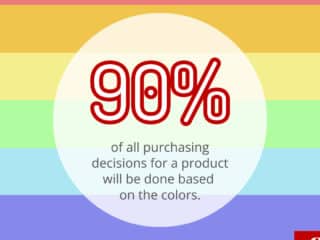Tik Tok on everyone’s mind: “Should we get in on this?”
The question “Just get into Tik Tok?” has two aspects here
- “Just go for it” – that doesn’t exist in serious digital marketing. In digital marketing, as everywhere else regards, “Where the energy goes, something happens.” Creating a Twitter account or putting an Instagram account out does not make an exchange or positive visibility. It takes determination and stamina. You have to contribute something. Otherwise, it’s like going to a party, standing in the corner, and not participating in the conversation, alone contributing something amusing or exciting.
Every channel you choose is, in principle, an investment decision.
Behind this is either a budget for external support or time invested internally – which ultimately costs money again. However, the internal investment is a little more low-key and prone to failure because of competing priorities.
-
The essential question is not whether Tik Tok is GENERALLY a good idea but whether it is a logical fit for this company’s Sales Funnel.
In principle, it is the case that
the path between tomorrow’s customer and the company is a kind of mathematical equation,
in which the respective elements must work in combination with the others so that the correct result is achieved in the end.
The question is, with which elements do I get from A (company) to B (buyer) efficiently (without unnecessary effort) and effectively (in a target-oriented way)? In case of doubt, different target groups, products, and sales regions need entirely different elements.
6 interesting facts about Tik Tok (at least 3 amazing ones!)
1. Tik Tok uses the power of video
The basic format is micro-videos. You can scroll until the doctor comes, have a visual disorder, or laugh your head off. Or you can make your own short videos and/or take part in one of the “challenges.”
2. Tik Tok uses the power of human psychology
That is a little amazing and, in principle, like Instagram, etc. The primary incentive here is to get approval or what feels like approval. That gets you hooked, so you want more of it and more of it, and then you confuse that fake approval with reality.
From a business perspective, one can say: The app builds on a timelessly existing behavior pattern. The good thing is that it works over and over again.
3. Tik Tok is the only top 5 app NOT owned by Facebook!
Look at the top right here: WhatsApp – belongs to Facebook, Messenger is Facebook, Facebook – well, yes 😉 – and Instagram… ditto.
What market power on the part of Facebook!
Were you aware of this?
Even YouTube lags behind (although this may also be due to higher browser usage).
4. Country of origin? Tik Tok is… of all things… (!) Chinese
Tik Tok is owned by the Chinese company ByteDance. ByteDance is smart and internationalized like a greyhound.
ByteDance has made the app available in 155 markets and 75 languages in its overseas push.
Boyboyboyboy.
I get a hint of
Unfortunately, there are no shares… otherwise would have looked like the next Alibaba!
5. Nevertheless: Tik Tok’s main success happens of all things…. in the USA!
6. Tik Tok has what is being dreamed of in Crypto: Its own currency!
There is a custom currency within the Tik Tok app. This virtual currency not only exists, but it also works! American users already exchanged about 23 million U.S. dollars into this currency last year to, among other things…
hold on tight!…
be able to send emojis!
Is this madness, or is this madness!?
(I imagine German entrepreneurs in Germany running up to an investor meeting to say, “Yes, and monetize it via a virtual currency. People will have to buy the currency so they can send emojis.” Hah, what fun that would have been! 
What do users find so remarkable about Tik Tok?
The crucial keyword here is “binge-watching video content.” It sounds very primitive at first – and I’m not sure if that’s enough to dismiss it.
So here’s some food for thought on that:
Is it the WEIRD VIDEOS – or the bare skin?
So, one thing catches your eye right away: yes, pretty girls here also like to show themselves with fewer clothes, looking lovely while dancing. Guys don’t have to go to the club anymore.
Furthermore, there are a lot of fun creative snippets where friends have fun goofing around. A bit like when we made videos in high school or college about the nonsense we did.
Well… if you don’t take it too seriously… why not?
Is it the CHALLENGES?
The Raindrop Challenge etc… and the enthusiasm for it…. isn’t that wonderfully childlike? Silly in a harmless way? Do people simply want to have fun in the age of climate change, post-Trump, and the caste system? And if so, wouldn’t that be understandable?
Is it about CREATIVITY & LIVING?
A large portion of people on there are like, ‘I love this Evanescence song, and I need to show people my interpretation.’
It’s an app full of people posting strange content with zero self-awareness or shame on the internet. That’s easy to mock, but it may also lead to TikTok’s success.
- Isn’t it just lovely to be allowed to be weird?
Is this the counter-movement to the Instagram pretty boy/girl life? - Or has it the same effects as wedding performances and the stage show at carnivals…?
Finally getting a stage?
- Is it simply a genuine co-creation? (and thus, totally aligned with the Age of the Aquarius?)
Are influencers simply the more creative agencies? - Is the creative spot idea not flattened in the boardroom but must and MAY be tested and proven directly in the market itself?
https://www.tiktok.com/@friendlyquest/video/6790548062973529349?referer_video_id=6751888070259297542&source=h5_t
Where did the rapid success come from?
Even if now much is pretended … as always applies … “nothing comes from nothing.”
ADVERTISEMENT. :))
Some of this rapid growth is due to an aggressive marketing campaign. ByteDance, the $75 billion Chinese tech conglomerate that owns TikTok, merged the app with Musical.ly, a similar app also owned by them, in August. Since the merger, ByteDance has advertised the app seemingly wherever young people turn: TikTok ads are all over Snapchat and YouTube; there’s even a wall plastered with the TikTok logo in Bushwick, Brooklyn.
From The Atlantic.
And they even got a little cheeky about it:
YouTube may be down, but TikTok is alive, awake and never better #StayWoke #YouTubeDown #MakeSocialFunAgain pic.twitter.com/sjEw8Si4Bj
— TikTok US (@tiktok_us) October 17, 2018
Target group: Who exactly uses Tik Tok?
- > 60% USA
- > 40% of the latest users are from India
- The core target group is 16 – 24 years (relatively young).
- 30% are under 30. They smell (and look) like school kids. Career Starters. College.
- Slightly more men than women.
- Android heavy! Only 52% via iPhone (“80% of TikTok’s sessions are on Android devices.”) / 80% of sessions on Android.
Ultimately, ByteDance has built a powerful marketing platform with Tik Tok.
If you placed an ad or advertorial there, it was crystal clear who you were reaching there (educated middle-class household, the woman of the house, children, and husband read along) and especially THAT you were reaching this target group there. For this, you could call up reasonable prices. And everyone was happy.
“We earn through advertising”
It still works that way:
Build a medium that is interesting for target group X + add suitable forms of advertising + suitable advertising customers => profitable business model.
It’s no different on Facebook; it’s the same on Instagram. The advertising tracking is currently picking up speed on LinkedIn…
From the point of view of companies that want visibility, this is the exact opposite of what continues to be a persistent rumor that social media is “free.”
The principle is called:
Pay to Play.
Pay to Play can nevertheless be worthwhile, of course!
That’s why advertisers used to spend their money on an ad in Brigitte, and it probably has been worth it. We will not tell you anything new, when we draw attention to the old marketing mantra:
“You gotta spend money to make money!”
What are the advertising formats on Tik Tok?
“Influencer Marketing Campaign” is the thing here. Basically testimonial mechanisms for the digital age. A different approach to celebrity-advertisement
The other is a kind of e-commerce or rather m-commerce. Purchases that are realized directly in the app.
Since the launch of TikTok in the U.S. in 2018, the American market has been responsible for over 24% of its in-app purchase revenue.
What Tik Tok is not too good in (yet)
In fact, Tik Tok is still struggling to achieve the “engagement” level they aim for. That means people log in but don’t interact much – that’s where the other platforms offer their advertisers more active audiences.
Tik Tok: Top for USA / India / B2C / <30
In summary: If you want to inspire young Americans and/or Indians for B2C products (everything that is the average consumption of ordinary private citizens, jeans, coke, etc.), you might be right at Tik Tok.
In the U.S., marketers say Tik Tok is “underused,” which might actually be true (see here below). Of course, this means that advertisers who position themselves now have a good chance of gaining more visibility.
Just 4% of U.S. social media marketers use the platform.
While 89% of marketers claim to utilize Facebook for business purposes, only 4% admit that TikTok is part of their company’s social strategy.
Tik Tok will reach Europe in the foreseeable future – most likely also as a platform for B2C topics / the core target group will be < 24 years. In the FMCG sector, you can definitely extend your observation sensors.
“The Medium is the Message.”
If I spread the same message via Vogue or Bild Zeitung, it ceases to be the same message. The context becomes part of the message. So even if the USA / <30 would be your target group, it is worthwhile to look if those could not be reached better and more target-oriented somewhere else. Tik Tok is not a suitable medium if seriousness is an essential part of the brand essence.
Do not do what is fashionable.
Do what fits into your Sales Funnel and your brand.
Only this will pay off in the long run.
_____
What do you think of Tik Tok so far?
What experience have you had with it?
Which elements are a MUST in your mathematical sales formula and have proven themselves – and which are you currently still testing?
_____
Sources:
https://mediakix.com/blog/top-tik-tok-statistics-demographics/
https://www.theatlantic.com/technology/archive/2018/10/what-tiktok-is-cringey-and-thats-fine/573871/
https://mediakix.com/blog/tiktok-marketing-campaigns-case-studies/
https://en.wikipedia.org/wiki/TikTok
https://en.wikipedia.org/wiki/List_of_most-followed_TikTok_accounts








Leave a Reply